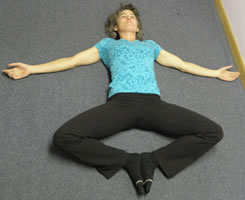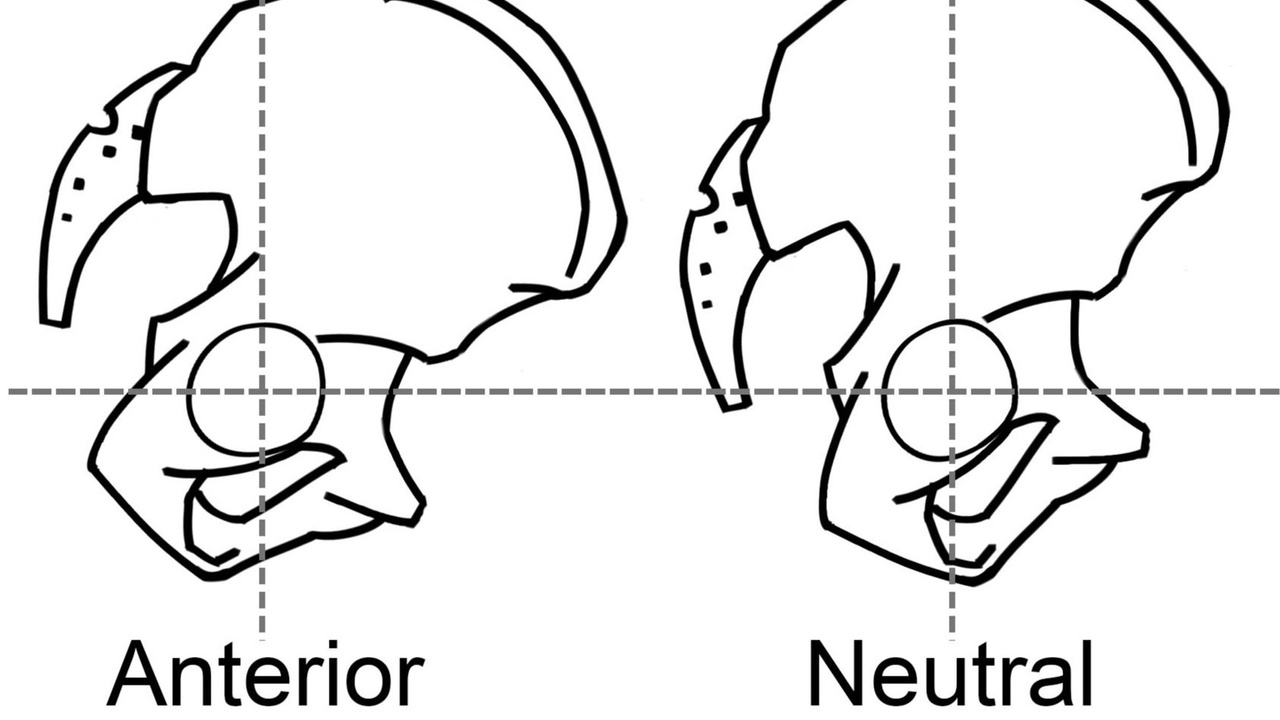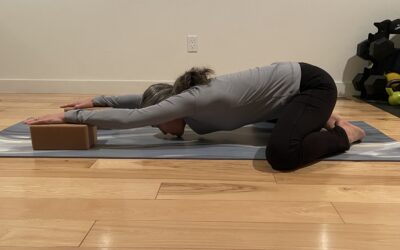 In my last blog I described the relationship between anterior pelvic tilt, lengthened hamstrings and shortened hip flexors. Additionally, an anterior tilt can lead to excessive curvature in the spine. This is because the lower back increases its arch while the upper back rounds more to balance the body against gravity. The flexion in the upper back continues into the neck and pushes the head forward. Consequently, the musculature in the lower back and neck become shortened and tight to hold the body upright, which can cause pain and disorders in these areas.
In my last blog I described the relationship between anterior pelvic tilt, lengthened hamstrings and shortened hip flexors. Additionally, an anterior tilt can lead to excessive curvature in the spine. This is because the lower back increases its arch while the upper back rounds more to balance the body against gravity. The flexion in the upper back continues into the neck and pushes the head forward. Consequently, the musculature in the lower back and neck become shortened and tight to hold the body upright, which can cause pain and disorders in these areas.
The lower body is also affected by an anterior pelvic tilt. When the forward rotation of the pelvis changes the neutral position of the hips in the pelvic girdle, this may alter knee and foot position. Thus, the entire kinetic chain of the lower body is affected. As a result, walking and running stride is compromised and foot loading becomes unbalanced.
In order to combat this issue, try the following five posture exercises in the order presented.

1. Static Back Knee Pillow Squeezes
First, lie on your back with your legs up on a chair. When you do this, your hips and knees are bent a 90 degree angle. Also, your arms should be out to your sides at a 45 degree angle with the palms up. Now, breathe deeply into your diaphragm, expanding the air forward and into your sides. Additionally, place a 6″ pillow between your knees, and squeeze the knees into the pillow using your inner thigh muscles. Repeat 60 times.

2. Hip Crossover Stretch
To start, lie on your back with both knees bent at a 90 degree angle with your feet on the floor. Now, put your arms straight out from the shoulders with your palms down. Next, cross your ankle over the opposite knee. Then, rotate your body down to the side until your foot touches. At this point, turn your head away from your knees and attempt to lay your ear on the floor. Additionally, push the knee in the air away from your body opening up your hip. You should feel tension in your thigh into your glute. Finally, relax the leg on the ground. Hold for one minute and repeat on the other side.

3. Frog
To begin this stretch, first lie on your back with both knees bent at a 90 degree angle with your feet on the floor. Then, place your arms out to your sides with the palms up. Now, open your knees out to the side, and place the bottoms of your feet together. While you’re in this position, hold it for two minutes.

4. Quad Stretch
Here’s something a little different. Instead of lying down, stand facing a wall or with your hands on a chair. Now, place one foot on a block, back of the couch, bed or other high object. Keep the quads parallel and vertical alignment from your foot to your head. There will be a tendency for the stance hip to bump out to the side. At this point, contract your glute to level the pelvis. Rotate your pelvis under on the leg that is pulled up behind you to increase the stretch in the front of the thigh. Hold each side for one minute.

5. Airbench
Sit against the wall with your upper legs parallel to the floor and feet hip width apart facing straight ahead. Push your heels into the floor. Rotate your pelvis to flatten your back against the wall. Pull your shoulders back flat into the wall only if you can do so while keeping your lower back flat. Hold the position for two minutes.



